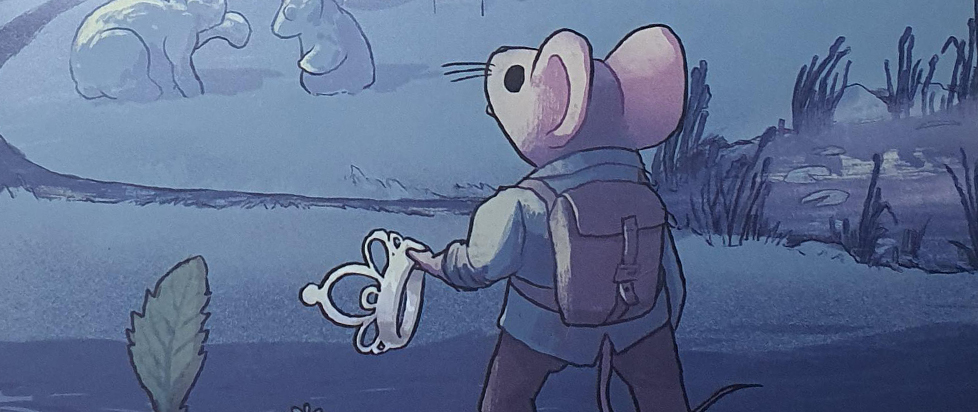
Collaborating on Microcosmic Adventures in Mausritter
This feature is a reprint from Unwinnable Monthly #171. If you like what you see, grab the magazine for less than ten dollars, or subscribe and get all future magazines for half price.
———
This series of articles is made possible through the generous sponsorship of Exalted Funeral. While Exalted Funeral puts us in touch with our subjects, they have no input or approval in the final story.

Ser Belladonna White scampered up to the top of the hill, the dry grasses whistling about her and crunching beneath her paws. She had finally reached Brambletown, but the view she was rewarded with was far from what she had expected.
The place was the very picture of dereliction. Where there were supposed to be verdant fields and abundant apple orchards there were instead dusty, seemingly drought-ridden ruins overrun with giant snarled hedges of blackberry brambles fighting for real estate with virulent tangles of vines. In fact, the signature bramble hedges were the only thing that marked this forsaken place as Belladonna’s destination. Any fruit the barren hedges or apple trees possessed had fermented, choking the air with their dank fragrance – it made her sensitive nose twitch – and littered the paths beneath them with their rotten spoils. As she surveyed the lands, her hind paw began to thump irritably and she found herself tapping her eyepatch with a single claw, both habits she was prone to whenever she grew annoyed or lost in troubled thought.
Supposedly Bristlewhisker, a rabbit farmer and an old friend of hers, had gone missing from his farmstead just beyond Brambletown. She had planned to skirt about the place originally, not one for small talk or becoming involved in whatever sidequests the peasants thought a disgraced noble paupermouse like her could be enlisted for. But the rumors she had heard on the way to Brambletown might be true after all: Queen Madriga had either gone mad with power or was punishing her townsfolk for letting her dear handmaiden Lucea suffer.
“Nasty piece of work, that,” Belladonna muttered to herself, checking over her supplies: just enough rations for a few nights, some perfume, some torches, her trusty yet worn shield and threadbare jerkin, 6 pips in case she needed to barter (that is, if there was anyone or anything left to barter with or for), and of course her trusty sling and a pouch of stones for ammunition.
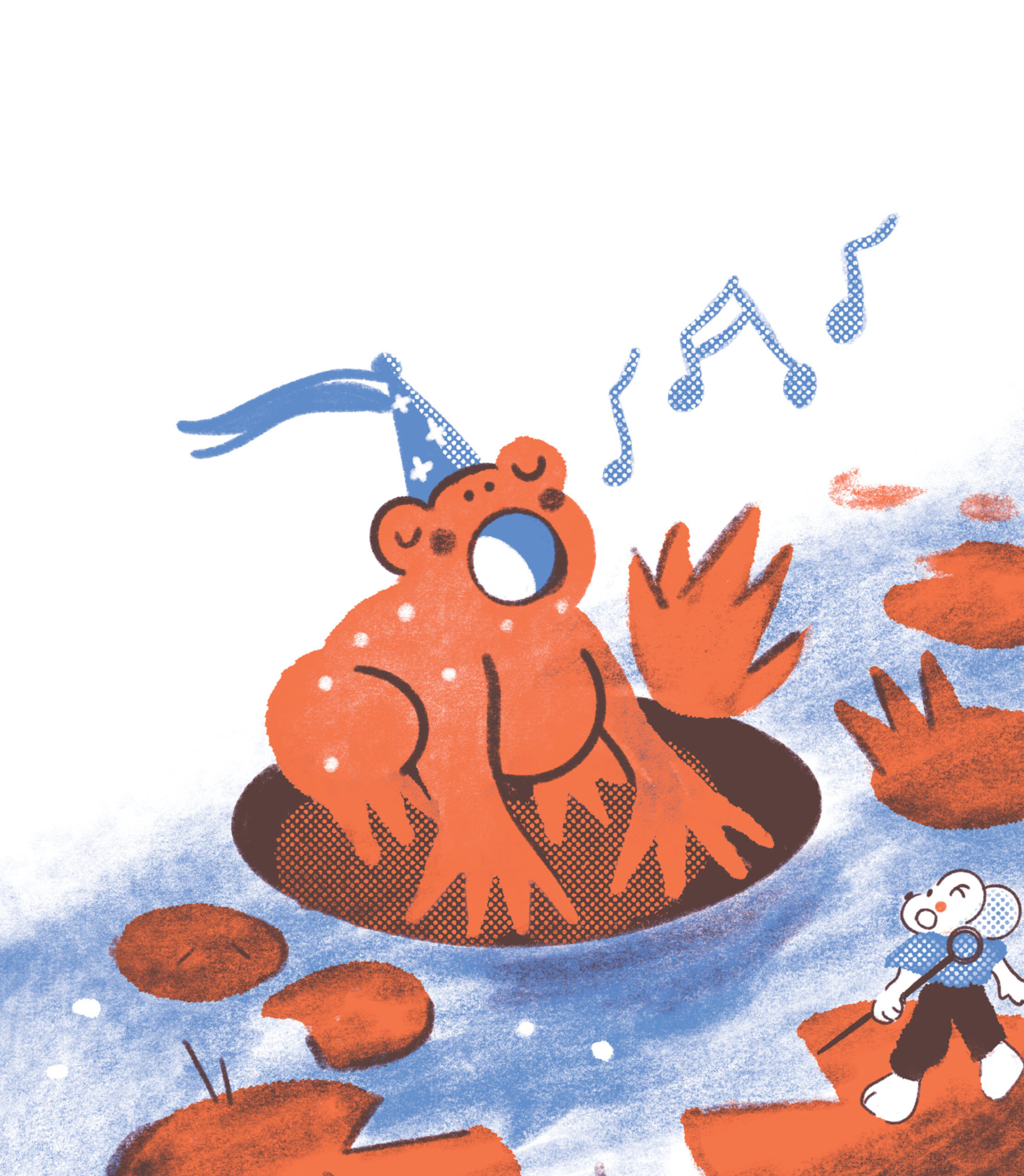
Although it was a summer night, the foul winds that riffled through her patchy gray fur were as chill as mid-autumn, nearly snatching the felt hat from between her large ears. A distressed yelp echoed in the distance, putting Belladonna on high alert. A rabbit at the base of the hill was being chased by some sort of monstrous constructs made of the rotten apples of the orchard and gnarled branches for their clambering limbs. Applejacks. They gurgled malevolently as they pursued the poor peasant.
Belladonna sighed as she equipped her sling and took aim for the Applejack closest to the rabbit’s tail. “It seems I have been called to a task yet again, by the will of the Moon,” she let the stone fly without hesitation for the Applejack’s head, “Through the muck it is, then.”
Since its online publication in November 2019 as a 24-page zine, Mausritter’s rules-light Old School Revival system and ridiculously charming Sword-and-Whiskers worldbuilding has spawned not only two beautiful print editions (published by Games Omnivorous; Losing Games’s first major collaborator) but a vast array of official and third-party adventures, available through Itch.io and Exalted Funeral. The Sword-and-Whiskers genre, if the name wasn’t evocative enough for you, is about early D&D-esque fantasy meeting the anthropomorphic fantasy tradition. You create a brave mouse character and venture forth in an old world full of danger and untold treasure. In my conversation with Isaac Williams, head of Losing Games and the creator of Mausritter, what became clear about his design philosophy was emphasizing homebrew invention and allowing the GM and their players’ imaginations to roam free.
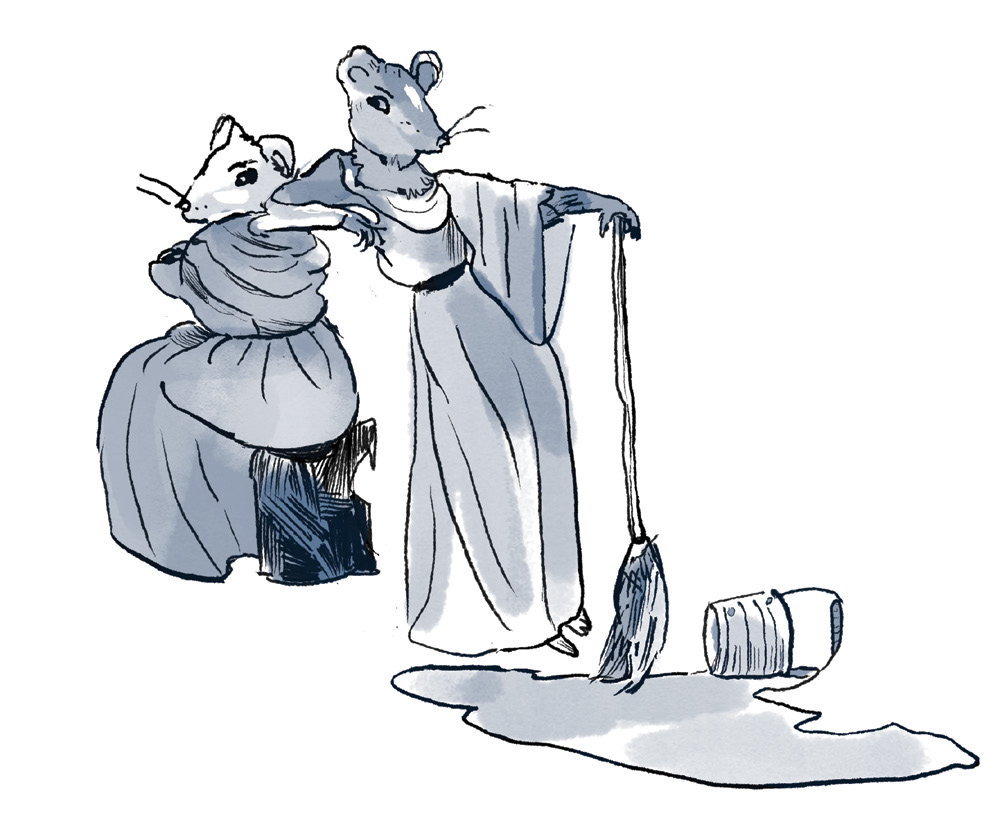
My above vignette featuring my one-eyed noble paupermouse Belladonna White (randomly created by Losing Games handy make-a-mouse generator) is based on “Fruit of the Orchard”, an adventure by Madeleine Ember that can be found in Mausritter’s most current box set of adventures, The Estate. Everything you need, including hooks, enemies, bits of lore, etc. is concisely laid out in two pages. But between what was provided there and the equally succinct 44-page Mausritter rules PDF, I felt confident enough to immediately jump into a solo run of “Fruit of the Orchard.” I probably wouldn’t get that far, as Mausritter is made to be played with a group, but the vibes of Ember’s cursed lands overrun by vegetal magic and rotten creatures took my fancy enough that I was enticed to consider it anyway. Williams notes that while he sees roleplaying games as “primarily a way to spend time with friends,” there are “a few third-party rulesets (Einzelmaus by Matthew Morris being the most popular)” that he gathers are “quite [well-received] among solo players.”
The Estate comprises 11 beautifully illustrated and designed pamphlet-style PDFs, 11 postcard modules and attendant sheets with Mausritter’s signature punch-out item and condition cards for character inventory and more. A quick glance at the credits for each of these adventures reveals that while creator Isaac Williams of Losing Games is responsible for the slick formatting of the pamphlets, the illustration and writing of each of The Estate’s adventures is handled by many other well-known names in the indie tabletop RPG scene. Many of these creators are also partners or collaborators on Exalted Funeral-published projects as well, including Diogo Nogueira, previously featured by Funeral Rites for his pulp-sci-fi with dinosaurs creation, Kosmosaurs.
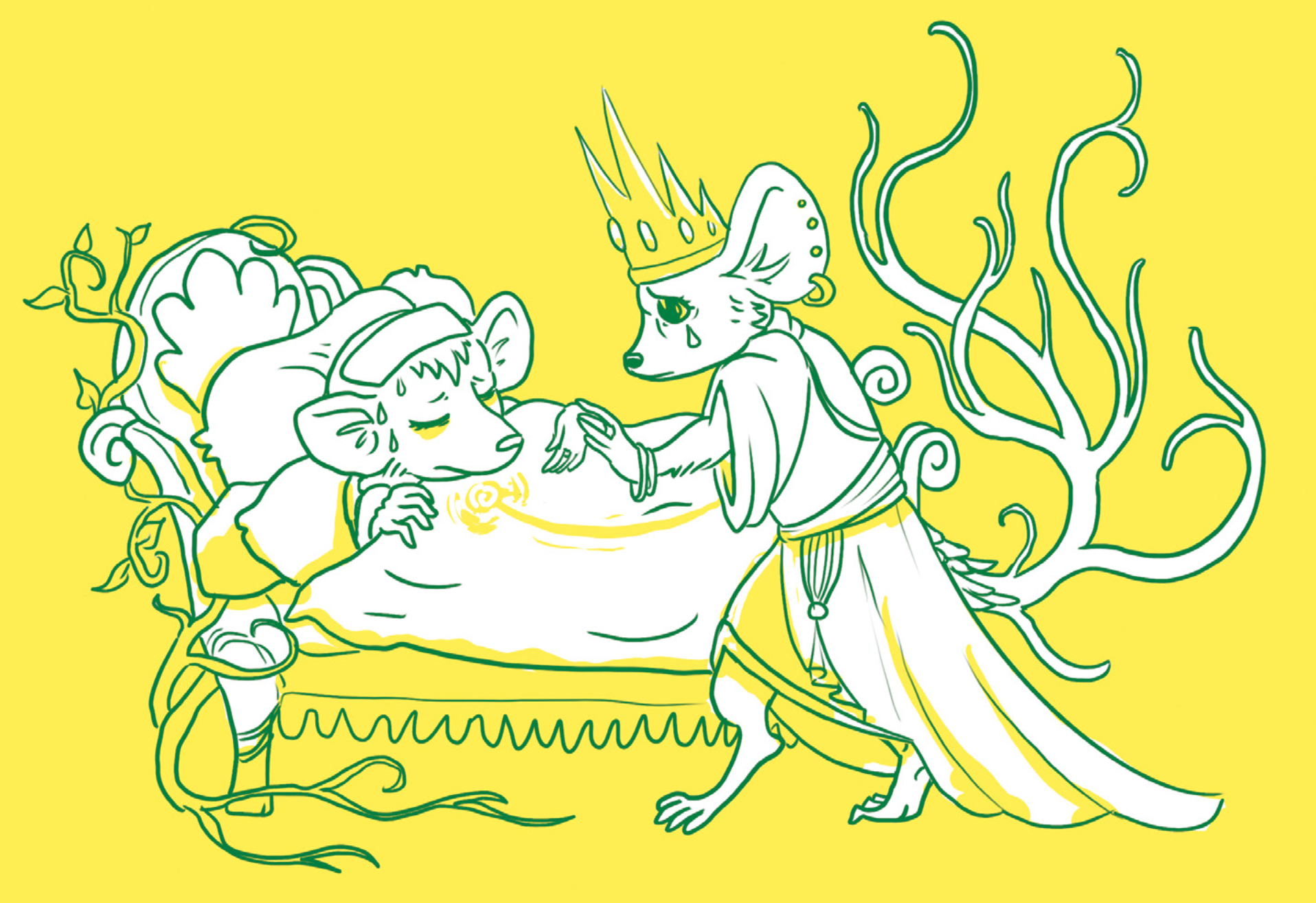
Communal storytelling has been the lifeblood of the Mausritter project. When I asked Williams about how early he conceived of allowing his vibrant community to create third-party adventures, he enthusiastically replied that “Mausritter wouldn’t be the same without the fantastic community that’s grown up around the game. As a game fundamentally about adventuring into dangerous places and pulling out loot, Game Masters coming to the game for the first time will often look for adventures and inspiration to use for their own game. Being a mouse-scale game, you don’t have the benefit of 50 years of D&D adventures to draw on, so it was obvious that for Mausritter to succeed, it would need more ideas, locations and resources than I alone could provide. The Mausritter Third-Party Licence is the solution to that – as long as you make it clear it’s a third-party resource, and as long as it doesn’t contain hateful content, you can publish a Mausritter adventure. In the fan-maintained Mausritter Library, there’s now more than 660 resources from hundreds of creators in almost a dozen languages, ready to be added to your game.”
With the third-party license in place, anyone can feel free to help expand the ever-growing world of Mausritter and not feel constrained by a rigid canon. Some of The Estate’s adventures take a more traditional fantasy tack while others are more urban, featuring museums or libraries full of clockwork creatures. However, as with some of the best stories featuring anthropomorphic mice and other small creatures in the past, there are often hints of the modern human world and its impact on the natural world. These hints come in the form of repurposed artifacts or junk, like plastic, sewing needles, toxic wastes, empty or human-occupied buildings which are perceived differently by their more diminutive inhabitants.
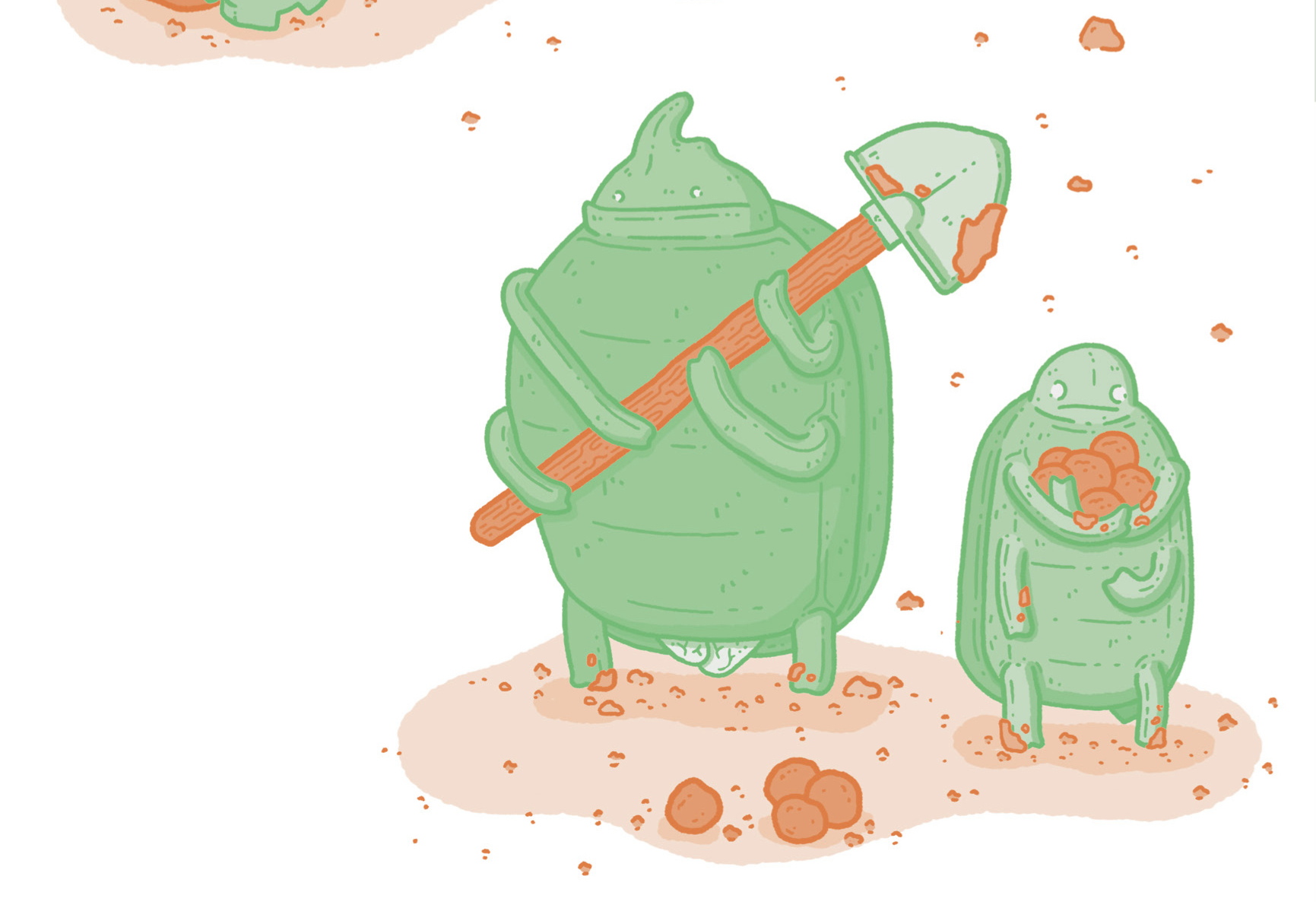
When I asked Williams whether the mice were aware of these hints of the modern world or interpret these phenomena through a different lens, his answer reminded me it was up to the GM and their players’ discretion: “Many parts of Mausritter’s worldbuilding exist only as subtle hints, to allow each table space to decide for themselves how it works in their particular game.
Personally though, I love to imagine that fantastic adventures are constantly playing out below our feet and above our heads, without us even realizing. It helps bring a little magic to the everyday, when you’re looking at a tree hollow or an abandoned wardrobe on the side of the street and thinking, “Is that a Mausritter adventure?”
That’s the elegance about TTRPGs, especially light-weight and adaptable ones like Mausritter that have an OSR flavor, rather than a strict framework, after all. One can choose to follow the game’s adventures closely or, like Williams’s original run of the game before it was iterated into Mausritter, combine elements they like from classics like D&D with more up-to-date board games like Mice and Mystics (thematically) and Into the Odd (mechanically).
That being said, there are some interesting natural world-inspired mechanics incorporated into rules. For instance, how your mice characters are named is matrilineal instead of patrilineal, resulting in inheriting matrinames instead of surnames, which suggests that the Mausritter mice have matriarchal societies. As well, the way mice communicate with other creatures (something that delights the budding conlanger within me) “attempts to systematize rules for a fantasy-talking-animals world by drawing on scientific taxonomy as a rough guide for GMs running the game. Player mice can talk to other mice, rats or other rodents with relative ease and some difference in custom. Other mammals can be talked to with a little difficulty, but communication with non-mammal species is much harder.”
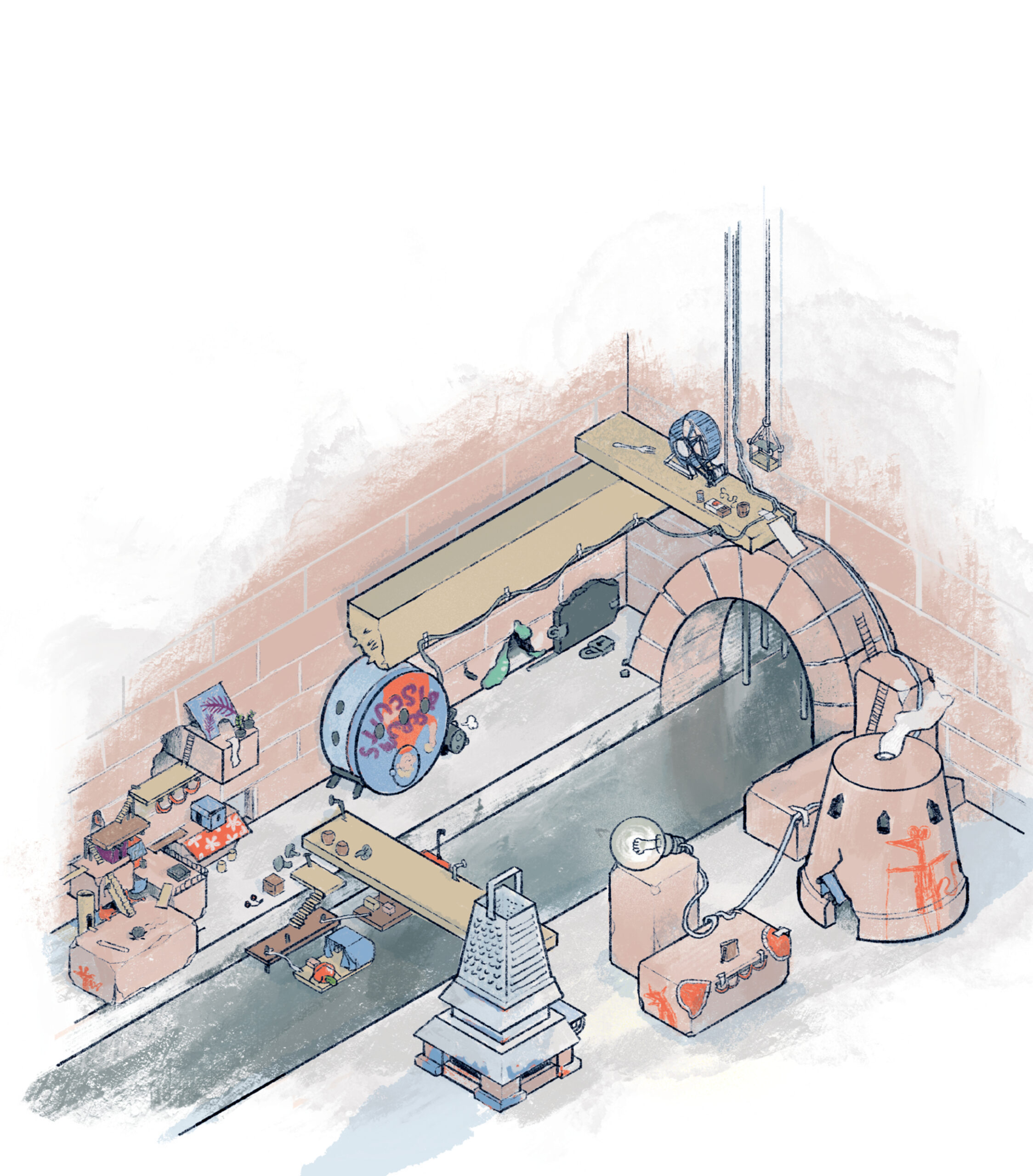
Mausritter has come a long way from its homebrew session and zine days. Williams explained that he’s already hard at work on another box set similar to The Estate, a project that will keep him busy for the remainder of 2024. His relationship with Games Omnivorous, who are responsible for publishing the TTRPG’s first print editions, is still going strong. “The publishing of the next print run of Mausritter “is a partnership between Games Omnivorous and Exalted Funeral – production is still handled by Games Omnivorous, but the game has gotten too big [for them] to handle distribution on their own and we needed to scale that up. Partnering with Exalted Funeral made a lot of sense for that, as they’ve got a fantastic distribution infrastructure.”
In other words, Mausritter will become more accessible to players globally. Considering the emphasis on daring adventures that are better experienced together, I’d say these partnerships are a fitting way to elevate such a unique indie OSR title.
———
Phoenix Simms is a writer and indie narrative designer from Atlantic Canada. You can lure her out of hibernation during the winter with rare McKillip novels, Japanese stationery goods, and ornate cupcakes.




